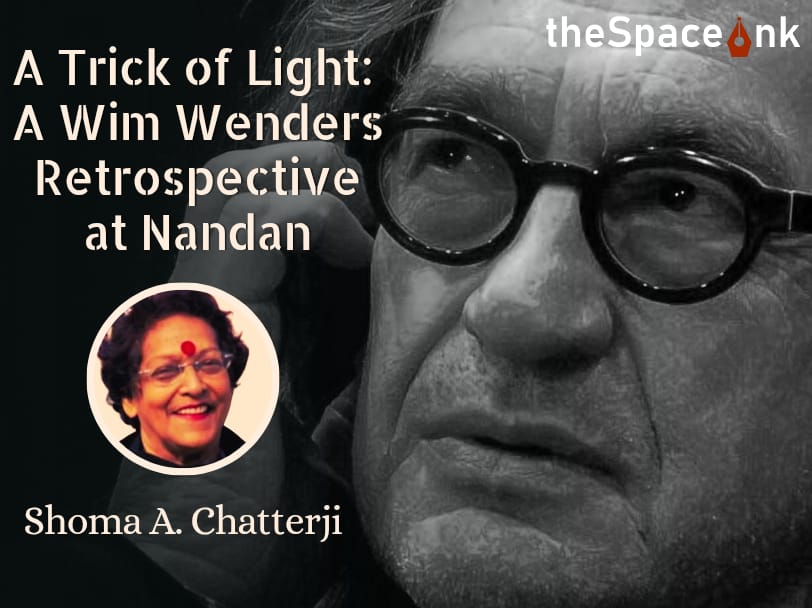The most fascinating part of ballet classes in school were the Degas prints of young ballerinas in blue and pink tutus rehearsing at the barre. Our ballet teacher gave us no time to admire the artwork on the walls, so I had to sneak a peek whenever possible, the delicate strokes and bright colors far more interesting than the exercises we were meant to practice. My love for the Impressionists perhaps grew from this early exposure to painting techniques that explored the depiction of light not in terms of white, grays and black, but short strokes of pure unblended bright colors.
Years later, I was transported back to our ballet lessons, when I chanced upon The Dance Class at the Metropolitan Museum of Art in New York. Though the lives of the dancers were anything but fairytale-like, Edgar Degas’s sketches and paintings that used a mix of techniques and materials, gave them a dreamlike quality. For his drawings he worked with pen, ink, pencil, chalk, pastel, charcoal, and oil on paper, often in combination with each other, while his paintings were carried out in watercolor, gouache, distemper, metallic pigments, and oils, on surfaces including card, silk, ceramic, tile, and wood panel, as well as widely varied textures of canvas. What I love about his dancers was his use of pastels, the layering of short colored strokes that imbued his figures with depth and lightness at the same time.

Degas, though Parisian by birth, spent three important years of his youth in Italy, where he immersed himself in European Renaissance art. He filled sketchbooks with studies of Michelangelo, Giotto, Leonardo da Vinci, and Titian’s sculptures and paintings, as well as drawings of historic buildings and the Italian landscape from his travels to Naples, Rome and Florence. He was fascinated by the female form and spent hours sketching dancers, milliners, prostitutes and cabaret artists, later creating his series of studies of women in various stages of ‘toilette’, in dressing rooms and backstage. Degas’s sketches exhibited remarkable draftsmanship and attention to detail, a trait that led him to rework some of his early oil paintings and portraits till they met with his own demand for perfection.
As a young artist, he was fascinated with color as much as he was with the severity of line, his work a mix of the two styles. In keeping with the purity of form of the Renaissance artists, his early drawings in Florence were precise and detailed. An artist who influenced him in his quest for perfection was the Neoclassical painter Ingres, whose cool, meticulously drawn monumental works depicting important historical personalities, like Napoleon, making him an icon of cultural conservatism. Later Degas’s love for color led him to the denser hues of Titian and the brilliant paintings of Delacroix, one of the most celebrated artists of the French Romantic period of art. Many of the more mature works of Degas grew out of a confrontation between these opposing influences, which resulted in the vigorously drawn and brilliantly colored pastels of his later years.

On his return to Paris in 1859, Degas tried launching himself in the established art world with large and grandiose portraits and paintings depicting historical events. Each painting was created with meticulous attention to detail, some remaining unfinished because he was unhappy with the result and scraped off the paint to rework a part of it. These paintings were beautiful, but he remained dissatisfied, perhaps comparing his technical skills to those of the Italian Masters he had studied. Eventually, a painting titled ‘Scene of War in the Middle Ages’ was accepted by the Salon jury, but went largely unnoticed by the patrons of art and ‘society’ at large. He found himself stifled by the classical rigidity of established art depicting scenes from history and historical figures and the formality demanded for commissioned portraits, and so began his exploration of other themes.
His astonishing closeup view of horse racing, in the painting ‘Scene from the Steeplechase: The Fallen Jockey’ met with little fanfare at the Salon’s next exhibition, though it was probably the beginning of his artistic transformation, from classical themes to depictions of contemporary everyday life. Another artist of that period who began painting scenes from horse racing was Édouard Manet, with whom Degas developed a friendly rivalry.

Degas’s bold colors and fresh perspective heralded his movement away from Realism to Impressionism, and he began painting both ordinary people, and the countryside from the sketches and studies he had made earlier. His desire to be accepted by the establishment gradually came to an end, with his acceptance in the world of contemporary and independent artists in Paris. A familiar figure in the Café Guérbois, a hangout of avant-garde artists such as Pierre-Auguste Renoir, Camille Pissarro, and Claude Monet, he would expound his belief that painting should engage with the sights and subjects of the modern world. As part of his own process of engaging with modernity, he purposely aligned himself with Realist novelists such as Émile Zola and Edmond and Jules Goncourt, often creating illustrations for their novels.
Degas painted his famed ballet series between 1870 and 1873, depicting scenes from rehearsals and performances such as his Dance Class of 1871. He found many eager buyers and soon became identified with this theme. The world of the Paris Opéra was surrounded by sexual intrigue as well as high glamour and had previously been out of bounds of established art. Degas armed with his great draftsmanship skills, and attention to detail, as well as his love of color, shone a light upon this section of Parisian life.
Degas’s bold colors and fresh perspective heralded his movement away from Realism to Impressionism, and he began painting both ordinary people, and the countryside from the sketches and studies he had made earlier. His desire to be accepted by the establishment gradually came to an end, with his acceptance in the world of contemporary and independent artists in Paris. A familiar figure in the Café Guérbois, a hangout of avant-garde artists such as Pierre-Auguste Renoir, Camille Pissarro, and Claude Monet, he would expound his belief that painting should engage with the sights and subjects of the modern world.
Japanese art began gaining in popularity in Europe around this time, its simple clean bold lines, flat colors and minimalistic style a welcome change from the heavy oils prevalent in Paris. Palettes lightened and subjects moved outdoors, to the countryside, to family outings and boat rides, street performers and theater.
In 1874, a group of artists including Claude Monet, Edgar Degas, and Camille Pissarro among others formed a group called the Anonymous Society of Painters, Sculptors, Printmakers, etc. Degas was one of the leading organizers of an exhibition put together by this group, exhibiting his signature repertoire of dancers, horse races, and laundresses. The group exhibition in Paris, included young artists whose work was rendered in diverse styles and on subjects hitherto unseen in salons, their main unifying factor being their contemporary approach to art. This led to the creation of the ‘Impressionist’ movement, though the artists themselves did not see their work as unified or belonging to a particular school. The term ‘Impressionist’ perhaps grew out of the artist’s ‘impressions’ of contemporary life, expressed in innovative and revolutionary styles, ranging from pointillism to short, broken brushstrokes that barely conveyed forms, pure unblended colors, and an emphasis on the effects of light.
Images courtesy: Public Domain.
Anjana Dutt is a writer, graphic designer, published poet, pianist, soprano, film maker, interior designer, photographer, single mom...you are as likely to find Anjana shooting her beloved Labrador, as you are to see her writing an article or designing a product. She spent 25 years in advertising, at Ogilvy and later J Walter Thompson. She rose to the position of Senior Creative Director was in charge of the films division in Calcutta, with several awards under her belt. As a columnist, she contributed articles fortnightly for three years titled ‘Elements of Style’ to The Telegraph newspaper. Launching herself anew as a Creative Consultant, her choice of independent projects have been as varied as her eclectic taste in music.







